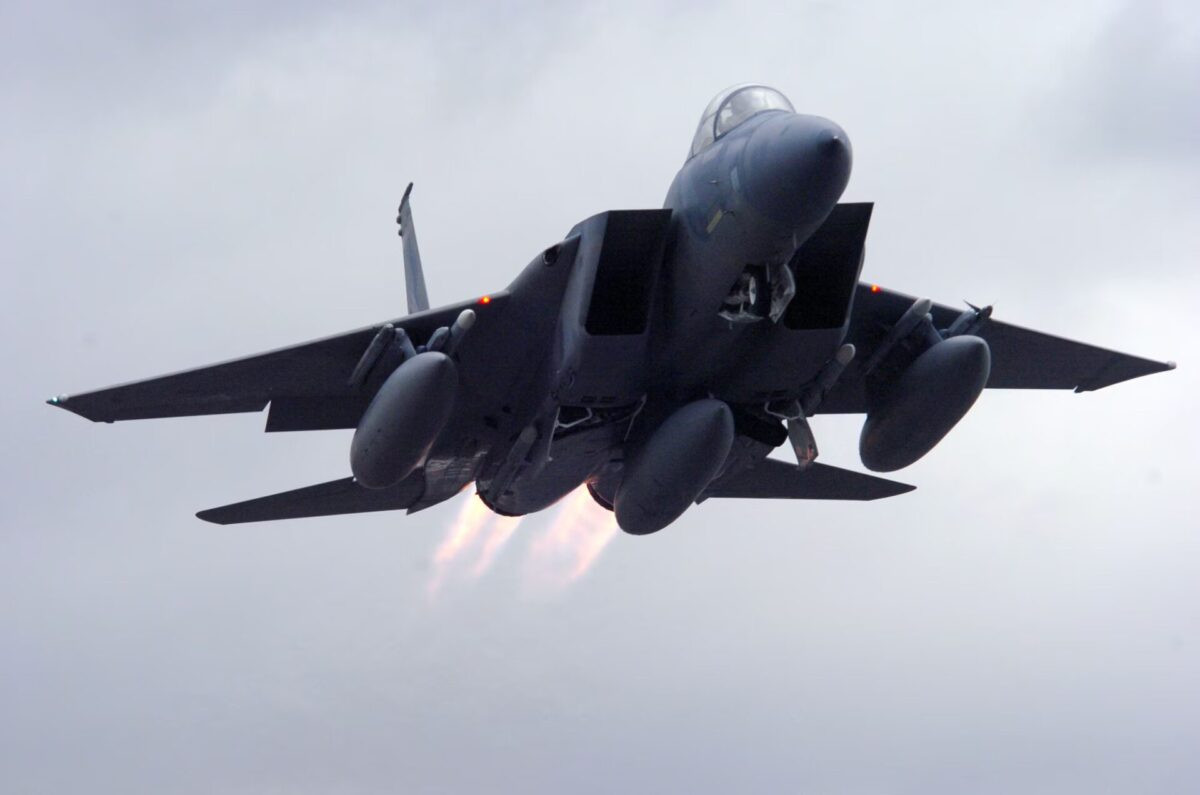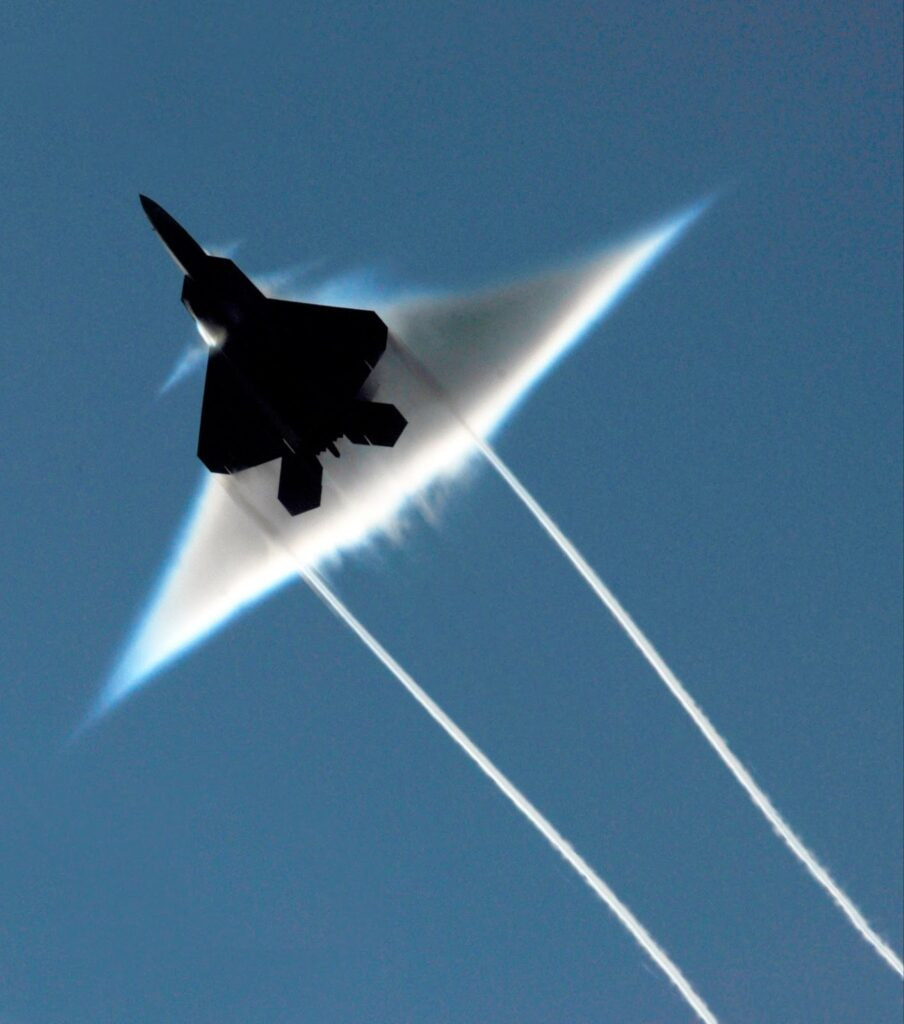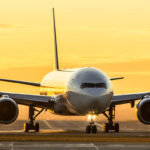How Fast Does A Fighter Jet Fly In Mph? The speed of a fighter jet in mph is a crucial factor in aerial combat and reconnaissance, and at flyermedia.net, we understand your need for accurate and up-to-date information. To answer that, we’ve compiled a detailed guide on fighter jet speeds, exploring top speeds, measurement methods, and the factors influencing them. So, let’s delve into the world of supersonic flight, exploring aircraft performance, aviation technology, and military aviation.
1. What Is the Average Speed of a Fighter Jet in MPH?
The average speed of a fighter jet can vary greatly depending on the specific aircraft and its mission profile. However, most modern fighter jets are capable of exceeding the speed of sound, which is around 767 mph (1,234 km/h) at sea level. The McDonnell Douglas F-15 Eagle, a widely used and theater-ready fighter jet, takes the crown with a speed of Mach 2.5 (1,650 mph).
To elaborate, let’s consider several factors that influence a fighter jet’s speed:
- Aircraft Design: Aerodynamic design plays a significant role. Sleek, streamlined designs reduce drag, allowing for higher speeds.
- Engine Power: Powerful engines generate the thrust needed to overcome air resistance and propel the aircraft forward.
- Altitude: Air density decreases with altitude, reducing drag and allowing for higher speeds.
- Payload: Carrying weapons or external fuel tanks increases weight and drag, reducing speed.
- Atmospheric Conditions: Factors like temperature, wind, and air pressure can affect an aircraft’s speed.
2. What Are the Factors Affecting the Speed of a Fighter Jet in MPH?
The speed of a fighter jet in mph is not a fixed number, but rather a dynamic value that is influenced by several factors. Understanding these factors provides a more comprehensive view of a fighter jet’s performance capabilities.
- Engine Type and Thrust: The type of engine used and the amount of thrust it can generate are primary determinants of speed. Fighter jets typically use powerful turbofan or turbojet engines that can produce significant thrust, allowing them to reach supersonic speeds.
- Aerodynamic Design: The aerodynamic design of a fighter jet plays a crucial role in minimizing drag and maximizing lift. A streamlined design with features like swept wings, blended wing-body configurations, and carefully shaped air intakes can significantly improve speed.
- Altitude: As altitude increases, air density decreases, resulting in reduced drag. This allows fighter jets to achieve higher speeds at higher altitudes compared to sea level.
- Weight and Payload: The weight of a fighter jet and its payload (including weapons, fuel, and other equipment) can affect its speed. Heavier aircraft require more thrust to accelerate and maintain speed.
- Atmospheric Conditions: Atmospheric conditions such as temperature, air pressure, and wind can also influence a fighter jet’s speed. For example, higher temperatures can reduce air density, while strong headwinds can decrease ground speed.
- Aircraft Configuration: The configuration of a fighter jet, including the position of its wings, flaps, and other control surfaces, can affect its aerodynamic performance and speed.
- Maintenance and Condition: The maintenance and overall condition of a fighter jet can impact its speed. Regular maintenance, proper engine tuning, and timely repairs are essential for ensuring optimal performance.
3. How Is the Speed of a Fighter Jet Measured in MPH?
The speed of a fighter jet in mph is typically measured using a combination of instruments and techniques.
- Airspeed Indicator (ASI): This is a primary instrument used to measure the speed of an aircraft relative to the surrounding air. It works by measuring the difference between static pressure (the pressure of the air at rest) and dynamic pressure (the pressure exerted by the air as the aircraft moves through it).
- Machmeter: As fighter jets approach and exceed the speed of sound, a machmeter is used to measure their speed in terms of Mach number. Mach number is the ratio of the aircraft’s speed to the speed of sound in the surrounding air.
- Global Positioning System (GPS): GPS technology can be used to determine the ground speed of a fighter jet by tracking its position over time. However, ground speed is different from airspeed, as it is affected by wind conditions.
- Radar: Radar systems can be used to measure the speed of a fighter jet relative to the ground or other objects.
- Flight Data Recorders (FDR): FDRs, also known as “black boxes,” record various flight parameters, including airspeed, Mach number, and altitude. This data can be used to analyze the performance of a fighter jet after a flight.
- Wind Tunnels: Wind tunnels are used to test the aerodynamic properties of aircraft and measure their speed and drag characteristics under controlled conditions.
- Flight Testing: Actual flight testing is conducted to validate the performance of a fighter jet and measure its speed under various conditions.
4. What Is the Speed of the F-15 Eagle in MPH?
 F-15 Eagle USAF
F-15 Eagle USAF
The McDonnell Douglas F-15 Eagle is one of the fastest and most successful fighter jets ever produced. Its top speed is Mach 2.5, which is approximately 1,650 mph (2,655 km/h) at an altitude of 40,000 feet (12,000 meters).
The F-15’s high speed is due to its powerful engines and aerodynamic design. It is powered by two Pratt & Whitney F100 turbofan engines, each producing over 23,000 pounds of thrust. The F-15’s sleek, streamlined design minimizes drag, allowing it to reach high speeds with ease.
The F-15’s speed has been a key factor in its success in air combat. It has been used by the United States Air Force (USAF) and other countries for decades, and has an impressive combat record. The F-15 has been credited with over 100 aerial victories, with no air-to-air losses.
The F-15EX, the latest version of the F-15, is even faster than the original. Boeing claims that a clean F-15EX can reach a speed of Mach 2.9, although this has not been publicly demonstrated.
5. What Are the Top 10 Fastest Fighter Jets and Their Speeds in MPH?
Here’s a table of the top 10 fastest fighter jets in the world, ranked by their maximum speed in mph:
| Rank | Aircraft | Max Speed (Mach) | Max Speed (mph) |
|---|---|---|---|
| 1 | Mikoyan-Gurevich MiG-25 | Mach 2.83 | 1,900 |
| 2 | Mikoyan-Gurevich MiG-31 | Mach 2.83 | 1,900 |
| 3 | McDonnell Douglas F-15 Eagle | Mach 2.5 | 1,650 |
| 4 | Sukhoi Su-27 family | Mach 2.35 | 1,600 |
| 5 | Mikoyan-Gurevich MiG-23 | Mach 2.35 | 1,553 |
| 6 | Grumman F-14 Tomcat | Mach 2.3 | 1,544 |
| 7 | Mikoyan MiG-29 | Mach 2.3 | 1,520 |
| 8 | IAI Kfir | Mach 2.3 | 1,520 |
| 9 | Lockheed Martin F-22 Raptor | Mach 2.25 | 1,500 |
| 10 | McDonnell Douglas F-4 Phantom II | Mach 2.23 | 1,470 |
6. How Fast Is the Lockheed Martin F-22 Raptor in MPH?
 Lockheed Martin F-22 Raptor USAF
Lockheed Martin F-22 Raptor USAF
The Lockheed Martin F-22 Raptor, a fifth-generation stealth fighter, boasts a top speed of approximately Mach 2.25, which translates to around 1,500 mph (2,414 km/h) at an altitude of 40,000 feet (12,000 meters). While not the fastest fighter jet in terms of top speed, the F-22’s true strength lies in its combination of stealth, agility, and advanced avionics.
Several factors contribute to the F-22’s impressive speed:
- Powerful Engines: The F-22 is powered by two Pratt & Whitney F119-PW-100 turbofan engines with thrust vectoring, allowing for exceptional maneuverability and acceleration.
- Aerodynamic Design: The F-22’s aerodynamic design incorporates stealth features, such as blended wing-body configuration and internal weapons bays, which reduce drag and enhance speed.
- Supercruise Capability: The F-22 can supercruise, meaning it can sustain supersonic speeds without using afterburners, conserving fuel and extending its range.
- High Altitude Performance: The F-22’s engines are optimized for high-altitude performance, allowing it to maintain speed and maneuverability at high altitudes.
7. What Role Does Speed Play in Modern Aerial Combat?
While speed was once a primary focus in fighter jet design, its importance in modern aerial combat has evolved. Today, a combination of factors, including stealth, maneuverability, sensor technology, and weapon systems, plays a more significant role in determining the outcome of air engagements.
- Beyond-Visual-Range (BVR) Combat: Modern air combat often occurs at long distances, beyond visual range, where pilots rely on radar and missiles to engage targets. In these scenarios, speed is less critical than sensor range, missile performance, and electronic warfare capabilities.
- Stealth Technology: Stealth technology allows fighter jets to avoid detection by enemy radar, enabling them to approach and engage targets undetected. Stealth can be more effective than speed in gaining a tactical advantage.
- Maneuverability: Maneuverability is crucial in close-range dogfights, where pilots rely on agility and precision to outmaneuver their opponents. Modern fighter jets are designed with advanced control systems and aerodynamic features to enhance maneuverability.
- Sensor Fusion: Sensor fusion involves integrating data from multiple sensors to provide pilots with a comprehensive view of the battlefield. This situational awareness can be more valuable than speed in making informed decisions and engaging targets effectively.
- Network-Centric Warfare: Network-centric warfare involves connecting fighter jets and other assets through a network to share information and coordinate operations. This enables pilots to make more informed decisions and engage targets more efficiently.
8. How Does Payload Affect the Speed of a Fighter Jet in MPH?
Payload refers to the weight of the weapons, fuel, and other equipment that a fighter jet carries. The heavier the payload, the more thrust is required to accelerate and maintain speed, resulting in a decrease in overall speed.
- Increased Weight: A heavier payload increases the overall weight of the fighter jet, which requires more engine power to overcome inertia and accelerate.
- Increased Drag: External payloads, such as weapons and fuel tanks, increase drag, which is the resistance of the air against the aircraft’s movement. This increased drag further reduces speed.
- Reduced Thrust-to-Weight Ratio: The thrust-to-weight ratio is a measure of an aircraft’s engine power relative to its weight. As payload increases, the thrust-to-weight ratio decreases, resulting in reduced acceleration and top speed.
- Compromised Aerodynamics: External payloads can disrupt the airflow around the fighter jet, compromising its aerodynamic efficiency and further reducing speed.
To mitigate the effects of payload on speed, fighter jet designers often incorporate features such as:
- More Powerful Engines: More powerful engines can generate more thrust to compensate for the increased weight and drag of a heavier payload.
- Internal Weapons Bays: Internal weapons bays allow fighter jets to carry weapons without increasing drag.
- Conformal Fuel Tanks: Conformal fuel tanks are designed to conform to the shape of the aircraft, reducing drag compared to traditional external fuel tanks.
9. What Is the Fastest Speed Ever Recorded by a Fighter Jet in MPH?
The fastest speed ever recorded by a fighter jet is Mach 3.2, which is approximately 2,113 mph (3,400 km/h). This record was set by the Lockheed YF-12A, a prototype interceptor aircraft developed in the 1960s.
The YF-12A was designed to intercept Soviet bombers at high altitudes and speeds. It was powered by two Pratt & Whitney J58 turbojet engines, each producing over 34,000 pounds of thrust. The YF-12A’s sleek, streamlined design and powerful engines allowed it to reach unprecedented speeds.
Although the YF-12A never entered production, it served as a valuable testbed for technologies that were later used in the SR-71 Blackbird, a reconnaissance aircraft that holds the record for the fastest air-breathing manned aircraft.
10. Why Are Modern Fighter Jets Not Designed to Fly Faster in MPH?
You might have noticed that many of the fastest fighter jets on our list are older models. This is because modern fighter jet design has shifted focus from sheer speed to a more balanced approach, prioritizing factors like stealth, maneuverability, sensor technology, and weapon systems.
 Honorary mentions USAF
Honorary mentions USAF
- Trade-offs: Designing a fighter jet for maximum speed often requires making trade-offs in other areas, such as maneuverability, stealth, and fuel efficiency.
- Beyond-Visual-Range Combat: Modern air combat often occurs at long distances, beyond visual range, where speed is less critical than sensor range and missile performance.
- Stealth Technology: Stealth technology allows fighter jets to avoid detection by enemy radar, which can be more effective than speed in gaining a tactical advantage.
- Maneuverability: Maneuverability is crucial in close-range dogfights, where pilots rely on agility and precision to outmaneuver their opponents.
- Cost: Developing and maintaining fighter jets with extremely high speeds can be very expensive.
FAQ: How Fast Does a Fighter Jet Fly in MPH?
1. What is the fastest fighter jet currently in service?
The McDonnell Douglas F-15 Eagle is currently the fastest fighter jet in widespread service, with a top speed of Mach 2.5 (1,650 mph).
2. How does altitude affect the speed of a fighter jet?
As altitude increases, air density decreases, reducing drag and allowing fighter jets to achieve higher speeds.
3. What is supercruise?
Supercruise is the ability of a fighter jet to sustain supersonic speeds without using afterburners, conserving fuel and extending its range.
4. How does payload affect the speed of a fighter jet?
Carrying weapons or external fuel tanks increases weight and drag, reducing the speed of a fighter jet.
5. What is the role of speed in modern aerial combat?
While speed was once a primary focus, modern aerial combat relies more on stealth, maneuverability, sensor technology, and weapon systems.
6. What is the fastest speed ever recorded by a fighter jet?
The fastest speed ever recorded by a fighter jet is Mach 3.2 (2,113 mph), set by the Lockheed YF-12A prototype interceptor.
7. Why are modern fighter jets not designed to fly faster?
Modern fighter jet design prioritizes a balance of factors, including stealth, maneuverability, sensor technology, and weapon systems, rather than sheer speed.
8. What is the difference between airspeed and ground speed?
Airspeed is the speed of an aircraft relative to the surrounding air, while ground speed is the speed of an aircraft relative to the ground. Wind conditions can affect ground speed.
9. How is the speed of a fighter jet measured?
The speed of a fighter jet is measured using a combination of instruments, including airspeed indicators, machmeters, GPS, and radar.
10. What is the thrust-to-weight ratio?
The thrust-to-weight ratio is a measure of an aircraft’s engine power relative to its weight, which affects its acceleration and top speed.
Conclusion: How Fast Does a Fighter Jet Fly in MPH?
Understanding how fast a fighter jet flies in mph involves exploring a multitude of factors, from engine power and aerodynamic design to altitude and payload. While speed remains a relevant factor, modern aerial combat emphasizes a balance of capabilities, including stealth and maneuverability. For more in-depth information about aviation, career opportunities, and flight training, visit flyermedia.net.
Are you ready to explore the world of aviation further? At flyermedia.net, we provide comprehensive resources for aspiring pilots, aviation enthusiasts, and industry professionals. Discover flight schools, career paths, and the latest advancements in aviation technology.
Address: 600 S Clyde Morris Blvd, Daytona Beach, FL 32114, United States
Phone: +1 (386) 226-6000
Website: flyermedia.net
Start your journey with us today and take your passion for flight to new heights!
